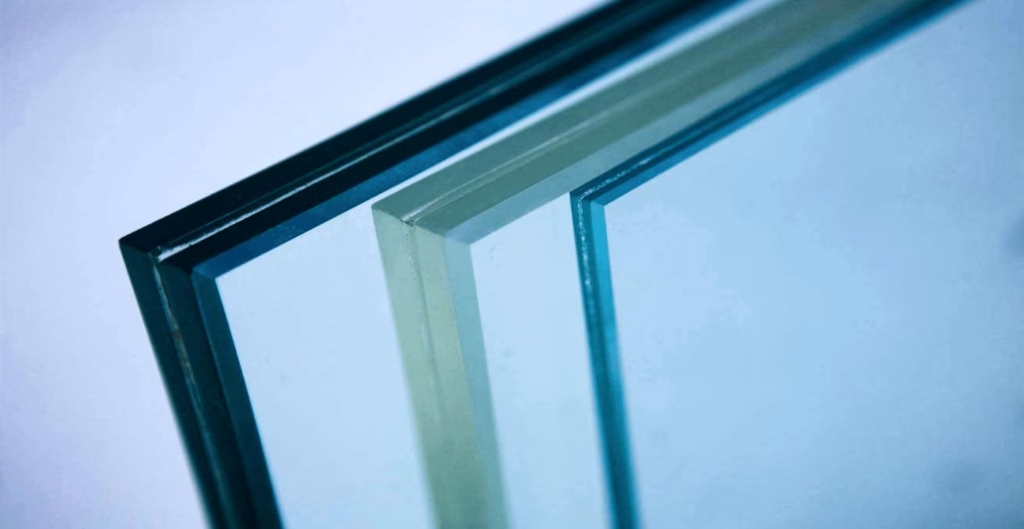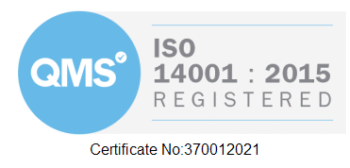Toughened Glass Vs Laminated Glass

Safety glass has become an increasingly popular in modern architecture. It is often used for commercial buildings, residential homes and outdoor spaces. Most industries and consumers can benefit from the versatility of glass. As a result glass choices such as laminated glass and toughened glass now blend both functionality and aesthetics to ensure it is adaptable for most settings. Both the forms of glass discussed are considered to be safety glass. So, are there any differences between them?
What is Toughened Glass?
Toughened glass is glass that has been heated to very high temperatures. This glass is then cooled quickly to make it up to 5 times stronger than ordinary glass. This process makes toughened glass much more difficult to break and is up to 500% more resistant to forceful impact and heat than regular glass. If the toughened glass does break, it shatters into hundreds of small pieces, the far less dangerous alternative when compared to large parts of sharp glass. Therefore, whenever safety is in question, toughened glass is a sensible choice. Toughened glass is commonly used within private and public commercial buildings as well as offices where the footfall is high.
Benefits of Toughened Glass
As mentioned earlier in this blog, toughened glass is up to five times stronger than ordinary glass and is more resistant to thermal breakage. In the rare cases that this glass does break, it falls into small shards rather than splintering like regular glass often does.
Toughened glass is also much more comfortable and safer to clean up following a breakage. Small fragments of toughened glass can be swept up without injury, without the possibility of sharp shards seriously hurting anyone.
The intense heat resistant characteristics that toughened glass carries make it the ideal solution for oven doors. Toughened glass is also capable of withstanding direct flames; therefore, it is suitable for cookware and scientific equipment.
Disadvantages of Toughened Glass
One consideration that needs to be made before deciding which glass is the best for you is that toughened glass can’t be drilled or re-cut once it has been formed. An attempt to do so would cause the entire pane of glass to shatter.
Also worth considering is that although the pane shattering into small safe pieces can be beneficial, it can also be a disadvantage in some cases. In certain circumstances, it is sometimes of benefit for the glass to remain within its frame once broken. If a burglary occurs a pane of glass remaining in its frame could prevent the robbery from happening.
Laminated Glass
Laminated glass is formed in an entirely different way to toughened glass. Unlike toughened glass, laminated glass is created by fusing two sheets of glass, between a plastic interlayer of Polyvinyl Butyral or resin.
This middle layer provides added insulation and prevents the laminated glass from fragmenting when broken. If the glass does break, the interlayer holds the glass in place and causes a web-like cracking pattern to keep the different layers of glass bonded. As a result, the centre layer prevents the glass from shattering into small dangerous pieces of glass.
Benefits of Laminated Glass
The strength that is offered by the laminated glass makes it next to impossible to break. Those seeking to enter without authorisation will struggle to pass. Even if breakage did occur, the interlayer maintains the structure of the glass, making widening a gap immensely difficult.
Laminated glass helps reduce the greenhouse effect that glass can often have. As laminated gas reduces the heat from the sun, it allows cooling solutions like air conditioning to be used less frequently.
Laminated glass is an excellent solution when aiming to reduce noise pollution in any particular room. The thick piece of glass causes noise waves to be disrupted when travelling through the material.
If adverse conditions occur or even in the case of a natural disaster, laminated glass will remain within its frame. This reduces the risk of anyone being cut or injured in such an event.
This type of glass also offers plenty of design options. Laminated glass is available in many colours or tints and can be manufactured either straight or curved, providing even further versatility in its appearance.
Disadvantages of Laminated Glass
If you want to reap the many benefits that laminated glass has to offer you need to ensure that the laminated glass is installed correctly. For example, to take full advantage of the sound-proofing qualities, it must be fitted with sufficient airspace between the two panes of glass. To ensure your laminated glass is installed correctly, deal with the experts at Express Toughening. Our glass fitters have years of experience in dealing with both small and large projects.
Another disadvantage of laminated glass is that it is quite hard to come by. There are only a few companies that manufacture laminated glass, so finding the right company can be difficult. This is combatted by the excellent service that is provided by Express Toughening and our experienced team of experts.
As you can see that although toughened glass and laminated glass are often considered to be very similar, they carry many different characteristics. Are you interested in implementing either toughened glass or laminated glass into your home or workplace? Express Toughening manufacture the highest quality glass available, providing the best possible service. Speak to an expert today and call 020 8500 1188.




